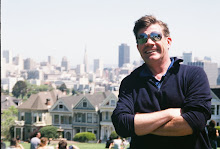JUNE 9 LIST OF RUSSIAN HOST CITIES FOR THE WORLD CUP
The World Cup is a mere week away! For the first time ever, Russia is hosting the massive spectacle. Matches will be held in eleven different cities...covering an area as large as Western Europe itself. For those of us unfamiliar with Russian cities other than Moscow, here's a quick rundown of the venues by stadium capacity.
Moscow: Luzhniki Stadium. Capacity: 81,000. Originally named Lenin Stadium, Russia's national stadium has hosted numerous memorable events since opening in 1956...including the 1980 Summer Olympics. It was remodeled for soccer and is now home to both the Spartak and CSKA Moscow clubs. It's new name is after the meadows nearby on the banks of the Moskva River.
St. Petersburg: Krestovsky Stadium. 66,881. The semifinals and 3rd place game will be held in the crown jewel of this year's World Cup. Nicknamed 'The Spaceship,' the state-of-the-art, technologically advanced arena is the pride and joy of the World Cup. At a cost of $1.1 billion, it's one of the most expensive stadiums ever built.
Sochi: Olympic Stadium. 47,659. Constructed for the 2014 Winter Olympics, this stunning arena has since been converted into a soccer stadium. It's located next to the centuries-old resort town and is the southernmost venue for this year's cup.
Volgograd Arena. 45,015. History buffs know this city as the site of the bloodiest battle ever. Two million Russian, German and Italian soldiers perished at the Battle of Stalingrad. Modern residents want to move forward, but it's hard when you're always in the shadow of the world's tallest statue commemorating the battle.
Saransk: Mordovia Arena. 45,000. The smallest city on the list has just 300,000 people. Yet Saransk boasts 1,000 years of history. Tartar mosques, Leninist monuments and Tsarist palaces dot the landscape. Hopefully, the new stadium will bring more visitors here in the future.
Nizhny Novgorod Stadium. 44,899. Another city steeped in history, 'Newtown' dates back to 1221. It was home to many principalities and serfdoms before Genghis Khan burned it all down. In 1923, it was renamed 'Gorky' after the Soviet poet.
Rostov-on-Don Arena. 43,702. Located on the Sea of Azov, Greeks first built a colony here in ancient times. Tanais was later settled by Goths, Mongols, Venetians, Turks and Cossacks. Today, the city is known as Russia's tech hub, as it is the place for a new start-up.
Kazan Arena 41,405. The longtime capital of the Tartar Golden Horde, Kazan was a longtime rival of Moscow. This spectacularly ended in 1552, when the aptly-named Ivan the Terrible came in and murdered everyone. Afterward, Catherine the Great built a Kremlin just like the one in Moscow. It remains intact and is the symbol of the city.
Ekaterinburg: Central Stadium. 35,000. The Easternmost location for the cup cities, Ekaterinburg is at the foot of the Ural Mountains, the traditional boundary between Europe and Asia. Formerly known as Sverdlovsk, it's where a fictional Dr. Zhivago took refuge and where real-life Tsar Nicholas II was assassinated.
Kaliningrad Stadium, 35,000. Putin is making a statement with this selection. Kaliningrad is not part of Russia proper...it's a small enclave wedged between Poland and Lithuania. When known as Koninsburg, it was the easternmost Baltic port in the Prussian Empire. Russia grabbed it during World War One and never gave it back. It's a source of anger in the region, and Putin loves to exacerbate his neighbors.
Saturday, June 9, 2018
Subscribe to:
Post Comments (Atom)






No comments:
Post a Comment